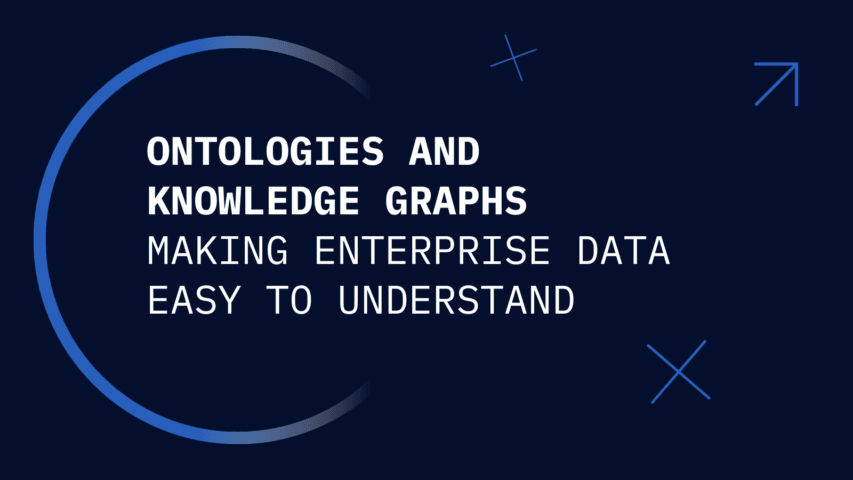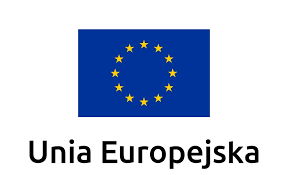
Ontologies and Knowledge Graphs
Making Enterprise Data Easy to Understand
Creating an ontology allows organizations to find answers to questions they previously couldn't answer—or that would have taken too much time. Companies today have access to huge amounts of data. But the real challenge isn’t collecting it—it's quickly finding answers to important questions. That's exactly what ontologies help you do. An ontology is a clear map of your business domain that defines core concepts, standardizes language, and organizes data clearly. As a result, your teams spend less time trying to figure out data, and more time making informed decisions.
In this article, we’ll show how DataWalk leverages ontologies to enable businesses to efficiently query complex data and uncover hidden insights faster
Introduction
Why do ontologies and knowledge graphs matter? Ontologies create a shared framework for your organization’s data. With clear rules and definitions, you can:
- Query Data More Efficiently: By unifying key concepts and relationships in your data, you can ask business-oriented questions and get answers quickly.
- Improve Data Quality: Spot and remove inconsistencies early on.
- Boost Interoperability: Use a shared vocabulary to easily integrate data from different teams or external partners.
- Enable Advanced Analytics: A clear, consistent foundation helps you answer more complex questions.
Example 1: Business-Oriented Querying
Suppose you want to identify recent claims involving premium vehicles, but your data is scattered across multiple systems, each with its own definitions and formats. Without a unified ontology, you'd need to manually piece together data from different sources, mapping inconsistencies and resolving terminology conflicts.
With an ontology, you have a common language and structured relationships, making the query straightforward:
"Which premium vehicles have an active insurance claim where the product type is MTPL, and the claim date is within the last 30 days?"
Your ontology knows that different systems categorize premium cars differently—for example, one system may label them as "Luxury Vehicles," another as "High-Value Cars," and a third as "Exclusive Models." Instead of treating them as separate entities, the ontology connects them under a single "Premium Car" category, ensuring that all relevant claims are retrieved, regardless of the data source. It can quickly pull matching records, so you can focus on insights instead of technical headaches.

Figure 1: An example of a business-oriented query in DataWalk
Example 2: Integrating with LLMs
DataWalk’s ontology can support advanced AI tools like LLMs. If you have an LLM-powered assistant connected to your knowledge graph, the ontology helps the AI interpret and query data effectively to find the right answer.
Example Use Case
An investigator asks the LLM-powered assistant:
“Show me all individuals who had financial transactions with Thomas Miller, and summarize the amounts.”
The LLM uses ontology to understand the relationships between Individuals, Transactions, and Accounts, and quickly provides a clear answer:
LLM Response (Summary)
“Here’s a report listing individuals who had transactions with Thomas Miller. For each person, the report includes their name, Social Security Number (SSN), and the total inbound and outbound transaction sums.”
By structuring data with ontologies, you can use AI-based analyses without confusion or wasted time.


Figure 2: An example of an LLM-based investigation
If you’d like to learn more about how DataWalk integrates with LLMs, contact us at the email below, and we can explore these use cases in greater detail.
Ontologies and Knowledge Graphs Explained
In simplest terms, an ontology is a clear map of your business domain. It includes:
- Sets: Groups of entities such as Individuals, Bank Accounts, or Transactions.
- Attributes: Properties that describe these entities (e.g., Name, Amount).
- Connections: Relationships between entities (e.g., an Individual owns a Bank Account).
When data from different sources adheres to this map, everyone uses the same labels and structure, making it much easier to combine and query information.
How Ontologies Relate to Knowledge Graphs
Think of an ontology as a city map, outlining roads and zones. A knowledge graph is a living city—people, businesses, and their daily interactions.
- In DataWalk, an ontology appears as various Sets (like People, Accounts, Transactions) with Attributes and Connections linking them.
- The knowledge graph then stores:
- Entities: Real-world objects that populate each Set (e.g., “John Smith” in Individuals, “Transaction #1234” in Transactions)
- Links: The real-world connections between entities (e.g., John Smith owns Bank Account #6789 which is the sender for transaction #1234).
With this arrangement, your analysts can navigate relationships and see how data points link together in a consistent, well-defined structure.
In Figure 3, you can see an example of ontology in DataWalk—the schema that underpins a knowledge graph. The icons represent different Sets, and the numbers indicate how many objects belong to each.

Figure 3: Ontology in DataWalk system.
DataWalk uses ontologies to let analysts easily find answers by quickly moving through connections in data.
Approaches to Ontology Building
An ontology is only as good as the questions it helps answer. Before defining concepts and relationships, it helps to first identify the Analytical Questions (AQs) that drive decision-making. These questions shape the structure of the ontology, ensuring it is practical, relevant, and aligned with business needs.
What are Analytical Questions?
Analytical Questions—also known as Competency Questions (CQs)—are the specific queries your data must answer to support business decisions.
For example, in fraud detection: "Which high-value transactions in the last 30 days were conducted by individuals flagged for suspicious activity?"
By identifying these questions upfront, you ensure your ontology captures only the most relevant concepts, attributes, and relationships—avoiding both gaps in data and unnecessary complexity.
Why Are Analytical Questions Important for Ontology Modeling?
By focusing on Analytical Questions during Ontology Modeling you achieve the following:
- Define Scope → Clarify which data points and relationships matter.
- Prevent Over- or Under-Modeling → Ensure your ontology is comprehensive yet efficient.
- Stay Business-Focused → Keep the model aligned with real-world objectives like investigations, compliance, and analytics.
- Enable Faster, Smarter Decisions → A well-structured ontology translates complex data into actionable insights.
By grounding your ontology in real business needs, you create a practical, user-centric model that delivers immediate value.
Two Approaches to Modeling
When constructing an ontology, organizations typically follow one of two approaches: Top-Down ("Schema First, Data Later") or Bottom-Up ("Data First, Schema Later"). Each method has its advantages and trade-offs, and in practice, most organizations land somewhere in between.

Figure 4: Top-Down vs Bottom-Up Scale.
Top-Down ("Schema First, Data Later")
In a Top-Down approach, you start with high-level domain models—either internally designed or based on standardized industry ontologies (such as financial or healthcare models). These models provide a predefined structure that you then adapt to your specific data needs.
When to Use:
- You have well-defined industry standards to align with.
- You want to ensure consistency across your teams and systems from the beginning.
Pros:
- ✔ Provides a broad conceptual framework that promotes a shared understanding.
- ✔ Helps maintain alignment with external industry standards and partners.
Cons:
- ✖ Requires significant upfront effort to tailor the model to real-world data.
- ✖ May include irrelevant concepts that aren’t immediately useful.
Bottom-Up ("Data First, Schema Later")
In a Bottom-Up approach, you derive the ontology directly from your existing data sources and the specific analytical or investigative questions you need to answer.
When to Use:
- Your data is unique, and there are no suitable existing models.
- You need to focus on practical, high-value analytical use cases first.
Pros:
- ✔ Ensures tight alignment with actual data and business needs.
- ✔ Avoids over-modeling by focusing only on relevant entities and relationships.
Cons:
- ✖ May lack interoperability if not aligned with broader industry standards.
- ✖ Risks missing higher-level domain insights that a structured model provides.
Finding the Right Balance
Most organizations adopt a hybrid approach, combining elements of both Top-Down and Bottom-Up strategies. They might start with a recognized industry model but adjust it based on real-world data insights. This ensures a structured yet practical ontology that evolves over time.
Ultimately, your approach depends on:
- Project scope – Are you building a highly customized system or integrating with industry-wide standards?
- Data complexity – Do you have structured, well-organized data, or are you working with disparate, inconsistent sources?
- Interoperability needs – Do you need your ontology to seamlessly connect with external systems?
By understanding the strengths of both approaches, you can create an ontology that is flexible, scalable, and aligned with your organization’s Analytical Questions.
The DataWalk Way

Figure 5: Where DataWalk Lies on Top-Down & Bottom-Up Scale.
Ontology modeling at DataWalk varies from project to project, but we are slightly skewed toward a Top-Down ("Schema First, Data Later") approach.
Rather than strictly following one methodology, we emphasize a structured starting point while allowing for adaptations driven by real-world data and Analytical Questions (AQs). This ensures that ontologies remain both scalable and immediately useful.
Where Analytical Questions Fit

Figure 6: Analytical Question as DataWalk Analysis.
Beyond balancing schema-first and data-first approaches, DataWalk places a strong emphasis on Analytical Questions. These real-world queries, such as: “Which customers have at least one recent claim on a premium vehicle?” ensure that your ontology is aligned with business priorities, not just an abstract data model.
However, analytical questions do more than just shape the initial model. They serve as a continuous guide, helping to refine and expand the ontology over time. A well-structured ontology doesn’t just answer the questions you have today—it captures the structure of your domain in a way that allows you to tackle future analytical challenges, even ones you haven't thought of yet.
By designing an ontology that reflects your domain, you ensure it remains flexible, scalable, and capable of supporting evolving business needs.
Iterative, Collaborative Modeling
Ontology design in DataWalk is not a one-time process—it evolves through collaboration and refinement:
- Define → Initial Sets, Attributes, and Connections are established.
- Evaluate → Subject Matter Experts (SMEs) assess whether the model answers the key Analytical Questions.
- Refine → If gaps exist (e.g., missing data sources or unclear relationships), the model is adjusted.
- Repeat → This iterative loop continues, ensuring the ontology stays aligned with business goals.
The result? A structure that scales with your data, maintains clarity across teams, and continuously adapts to new challenges.
Key Benefits
- Better Decision-Making → Clear definitions and structured relationships enable faster, more informed insights.
- Improved Data Quality → Consistency across Sets and Connections reduces errors and builds confidence.
- Scalable Analytics & Reporting → As your business evolves, your ontology expands to incorporate new data and questions.
Conclusion
Throughout this document, we’ve explored how ontologies and knowledge graphs can help your organization find answers to questions it previously couldn't answer. Below is a quick summary of the key takeaways:
✔ Ontologies as Blueprints → They define Sets, Attributes, and Connections, ensuring a consistent and shared data language across teams and systems.
✔ Why Ontologies and Knowledge Graphs Matter → Standardized definitions accelerate decision-making, improve data quality, and streamline data integration across internal and external sources.
✔ Analytical Questions → Real-world business questions guide the ontology design, ensuring it remains practical, focused, and user-centric
✔ Building Approaches → Most organizations use a blend of Top-Down ("Schema First, Data Later") and Bottom-Up ("Data First, Schema Later") to create a robust ontology tailored to their needs…
✔ The DataWalk Way → Our approach combines structured modeling with iterative refinement, ensuring ontologies evolve with data and business needs while supporting better insights, data quality, and scalability.
These are the high-level advantages offered by the DataWalk philosophy in ontology modeling. If you want to dive deeper, stay tuned for the upcoming article.

Solutions
Product
Partners
Company
Resources
Quick Links





